Anand Singh Jalal
A Novel Local Binary Pattern Based Blind Feature Image Steganography
Jan 16, 2021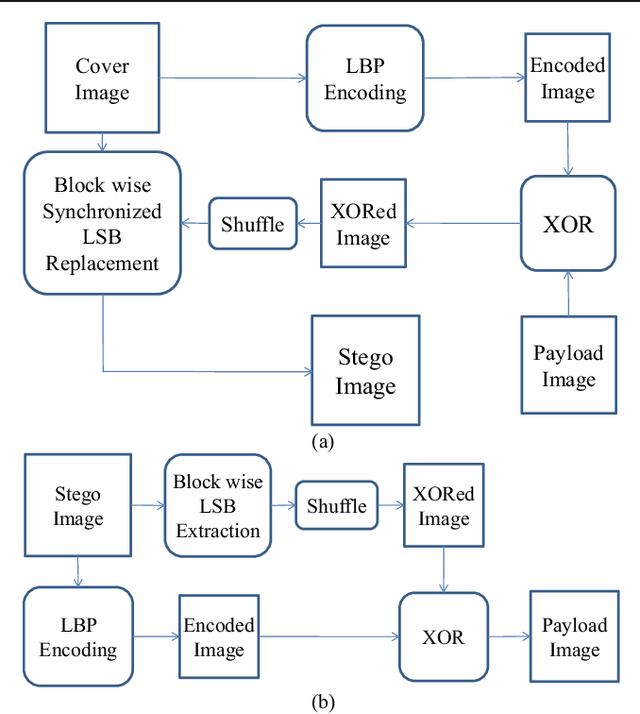
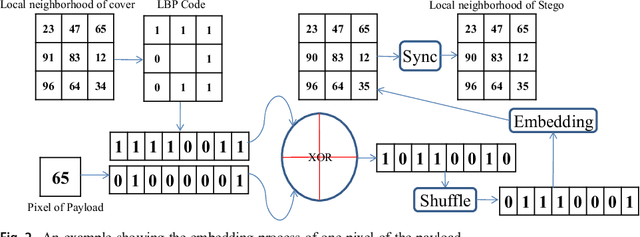

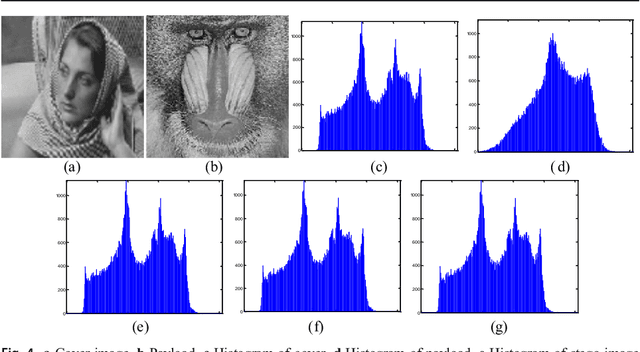
Abstract:Steganography methods in general terms tend to embed more and more secret bits in the cover images. Most of these methods are designed to embed secret information in such a way that the change in the visual quality of the resulting stego image is not detectable. There exists some methods which preserve the global structure of the cover after embedding. However, the embedding capacity of these methods is very less. In this paper a novel feature based blind image steganography technique is proposed, which preserves the LBP (Local binary pattern) feature of the cover with comparable embedding rates. Local binary pattern is a well known image descriptor used for image representation. The proposed scheme computes the local binary pattern to hide the bits of the secret image in such a way that the local relationship that exists in the cover are preserved in the resulting stego image. The performance of the proposed steganography method has been tested on several images of different types to show the robustness. State of the art LSB based steganography methods are compared with the proposed method to show the effectiveness of feature based image steganography
Fusing Color and Texture Cues to Categorize the Fruit Diseases from Images
Dec 23, 2014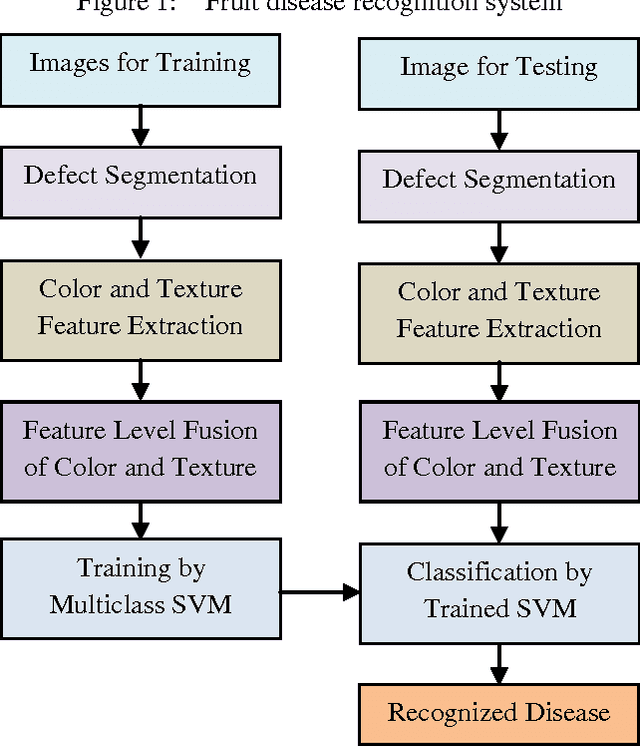
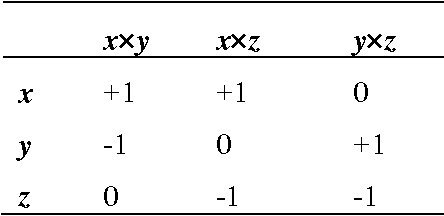

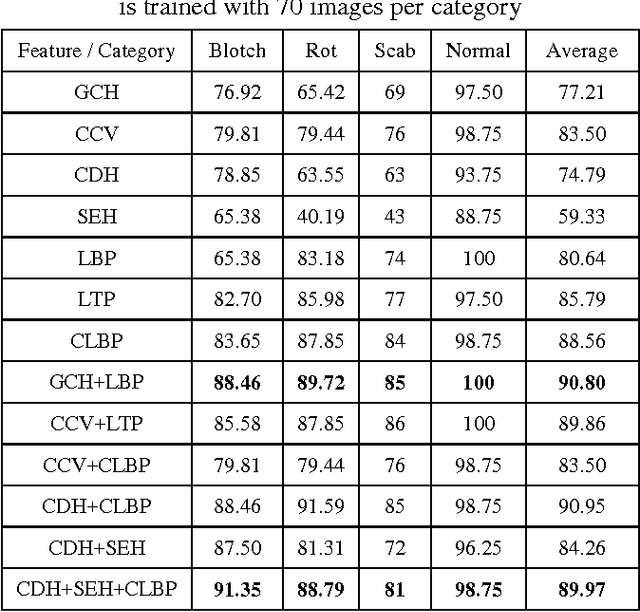
Abstract:The economic and production losses in agricultural industry worldwide are due to the presence of diseases in the several kinds of fruits. In this paper, a method for the classification of fruit diseases is proposed and experimentally validated. The image processing based proposed approach is composed of the following main steps; in the first step K-Means clustering technique is used for the defect segmentation, in the second step color and textural cues are extracted and fused from the segmented image, and finally images are classified into one of the classes by using a Multi-class Support Vector Machine. We have considered diseases of apple as a test case and evaluated our approach for three types of apple diseases namely apple scab, apple blotch and apple rot and normal apples without diseases. Our experimentation points out that the proposed fusion scheme can significantly support accurate detection and automatic classification of fruit diseases.
Adapted Approach for Fruit Disease Identification using Images
Aug 04, 2014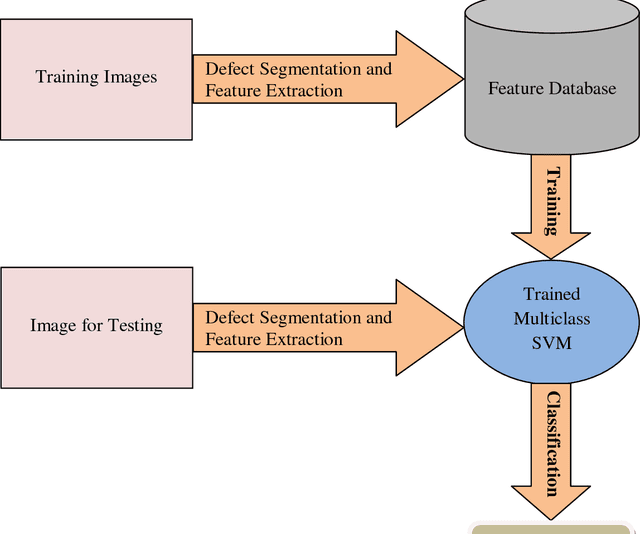
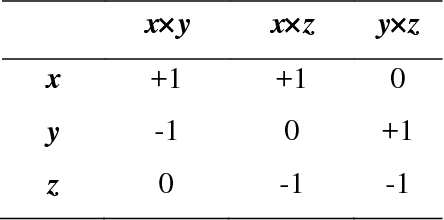
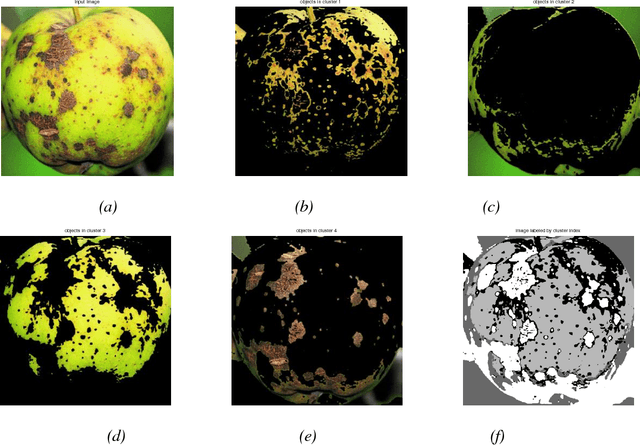
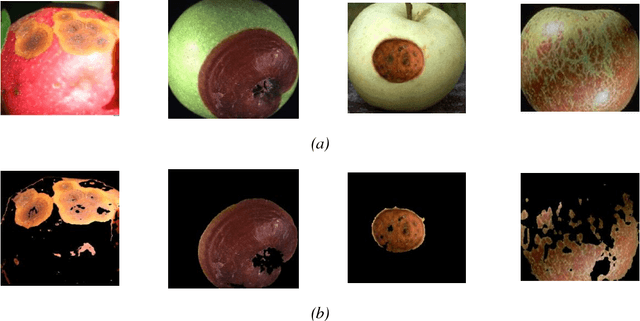
Abstract:Diseases in fruit cause devastating problem in economic losses and production in agricultural industry worldwide. In this paper, an adaptive approach for the identification of fruit diseases is proposed and experimentally validated. The image processing based proposed approach is composed of the following main steps; in the first step K-Means clustering technique is used for the defect segmentation, in the second step some state of the art features are extracted from the segmented image, and finally images are classified into one of the classes by using a Multi-class Support Vector Machine. We have considered diseases of apple as a test case and evaluated our approach for three types of apple diseases namely apple scab, apple blotch and apple rot. Our experimental results express that the proposed solution can significantly support accurate detection and automatic identification of fruit diseases. The classification accuracy for the proposed solution is achieved up to 93%.
* 15 pages, 8 figures, 1 table
 Add to Chrome
Add to Chrome Add to Firefox
Add to Firefox Add to Edge
Add to Edge